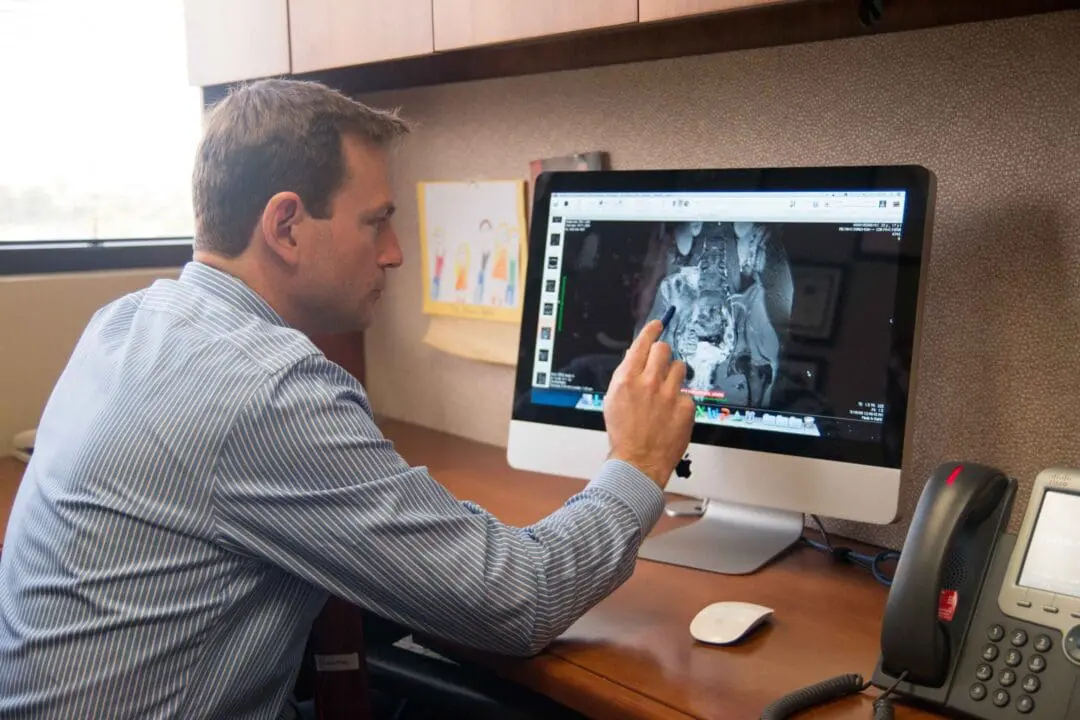
About Pleomorphic Sarcoma
Formerly known as malignant fibrous histiocytoma (MFH), a pleomorphic sarcoma is a tumor of the soft tissue and bone that is categorized as having an undifferentiated or unspecific origin. Like all soft tissue tumors, this is a rare diagnosis in Los Angeles, but accounts for many sarcoma diagnoses among older patients between the ages of 50 and 70. It is a malignant (cancerous) tumor that usually develops in the extremities and the region inside the abdomen known as the retroperitoneal space. Metastasis (spread) of this type of cancer is most common to the lungs, bones, and liver.
A diagnosis performed by a professional oncologist, such as Dr. Allison located in Los Angeles, of undifferentiated pleomorphic sarcoma (UPS) is also what is known as a diagnosis of exclusion, meaning that a precise or more specific diagnosis of the origin of the tumors is inconclusive or unclear. Pleomorphic sarcoma tumors do not resemble any type of normal tissue when examined under a microscope.
The histology of a UPS (how the tumor appears when observed under a microscope, and its behavior) can resemble other specifically differentiated types of sarcoma tumors, most commonly:
-
- Myxoid
- Inflammatory
- Giant cell
- Storiform pleomorphic (the most common cell type in an undifferentiated pleomorphic sarcoma, accounting for approximately 70%)
Like all tumors, soft tissue tumors can be either malignant or benign, with symptoms and treatment options varying from person to person depending on the location, size, grade, and stage of the tumor, as well as on the patient’s overall health and genetic factors. While anyone can develop a sarcoma tumor at any time anywhere in the body, some types are more common in younger children and teenagers, while others typically affect adults in middle age or over the age of 60. Many forms of sarcoma tend to develop in the long bones of the arms and legs, especially in children, making limb preservation a focal point of treatment.
Pleomorphic sarcomas tend to contain a large number of a type of immune cell known as a histiocyte (or macrophage). Unlike other immune cells, histiocytes remain static in a specific part of the body and do not travel beyond their original site. They can be found in a number of organs like the brain, liver, lymph nodes, breast tissue, tonsils, spleen, and placenta.
The most common factors in pleomorphic sarcoma diagnoses
- Age – this type of soft tissue cancer is exceptionally rare in children and young people under the age of 20. It is the most common form of sarcoma in older adults, and generally affects people over the age of 60.
- Race – More common in Caucasians than African Americans or Asians
- Gender – More common in men than women
Signs & Symptoms of Pleomorphic Sarcoma
The most common symptom/sign of a pleomorphic sarcoma is a rapidly growing, painless lump or mass. They can manifest rather quickly, and are often mistaken as a result of trauma. Because they are most common in the lower extremities, bumping into something like a table or piece of furniture can make it seem like the lump is a result of the impact.
More often than not, random masses that appear on the body tend to be benign. However, any new growths or lumps that develop anywhere on the body and do not go away on their own, or continue to grow or become painful should be examined by a physician. Pleomorphic sarcomas are usually not painful, unless they are pressing on a nerve or blood vessel.
There are a number of different subtypes of malignant soft tissue tumors. While UPS is the most common form among older adults, some of the other common forms include:
-
- Liposarcoma
- Leiomyosarcoma
- Synovial
- Malignant peripheral nerve sheath tumor
- Rhabdomyosarcoma
- Hemangiopericytoma
- Fibrosarcoma
- Hemangioendothelioma
- Angiosarcoma
- Alveolar soft part
- Epithelioid
A physical examination, diagnostic imaging (MRI, X-ray, CT scan), and a biopsy if deemed necessary are the diagnostic methods used to identify and assign a grade and stage to a tumor, which helps to determine how aggressive the tumors are, whether they are fast or slow growing, how likely they are to spread, and if they have already spread beyond the primary site (where they originally developed). Treatment varies according to the factors that make up the characteristics of the tumors, as well as the overall health of the patient.
Malignant sarcomas are usually treated with a combination of surgery, radiation, chemotherapy, and drugs. For this particular tumor, radiation is almost always prescribed for the purposes of limb preservation when possible. Treatment will also depend on whether the tumors have metastasized to the lungs or other parts of the body.

![pexels-pixabay-40568[1]](https://drallison.org/wp-content/smush-webp/2022/04/pexels-pixabay-405681.jpg.webp)